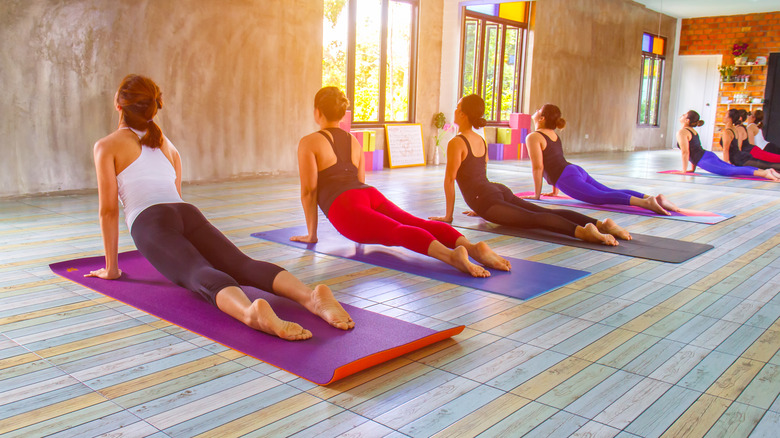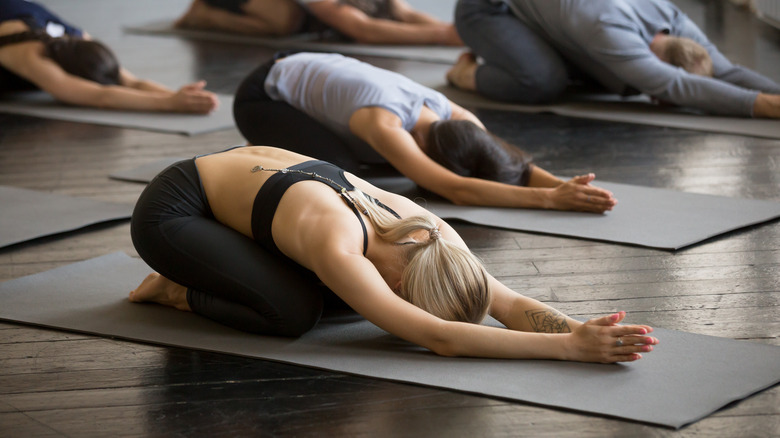Everything You Need To Know About Bikram Yoga
Yoga is used as a complimentary, relaxing form of exercise. Yoga changes your body in many ways and can be integrated alongside other types of exercise for a well-rounded lifestyle that helps with flexibility and mental health, according to Mayo Clinic. The practice combines the physical and mental aspects of your being to promote things like stress-reduction and stillness. There are many styles of yoga, but one that's become very popular is Bikram yoga, a form of hot yoga.
While most people consider yoga relaxing, Bikram yoga is meant to turn up the heat (literally). Students spend 90 minutes in a very hot, humid room (105 degrees Fahrenheit and 40% humidity) while doing a series of 26 different poses, explains Shape. The practice was started by a man named Bikram Choudhury in the 1970s, who may be in some hot water himself, according to USA Today. What exactly are the benefits of Bikram yoga?
Bikram yoga stretches the body while building discipline
While most people don't want to move around in a hot and humid room, students of Bikram yoga claim it provides many benefits. Because the room is so hot, it loosens the muscles and allows students to get into deeper poses, thus improving flexibility, according to Classpass. Another top benefit of the practice is building discipline. It's difficult to stay in a hot and humid room for any length of time, let alone 90 minutes. By participating in these classes, students are not only training the body, but also their mind, explains Shape.
However, it's important to know that while yoga has been featured in scientific studies and shown to improve stress, anxiety, depression, chronic pain, and overall well-being, the benefits of Bikram yoga specifically are yet to be determined. For example, proponents of the practice claim that it helps flush out toxins, but toxins are removed from the body by the liver and kidneys, not sweating, according to LiveScience. It can also complicate certain medical conditions, such as high blood pressure, diabetes, and certain heart conditions. If you have any of these conditions, it may be better to go with the slightly less intense hot yoga or regular yoga instead.


